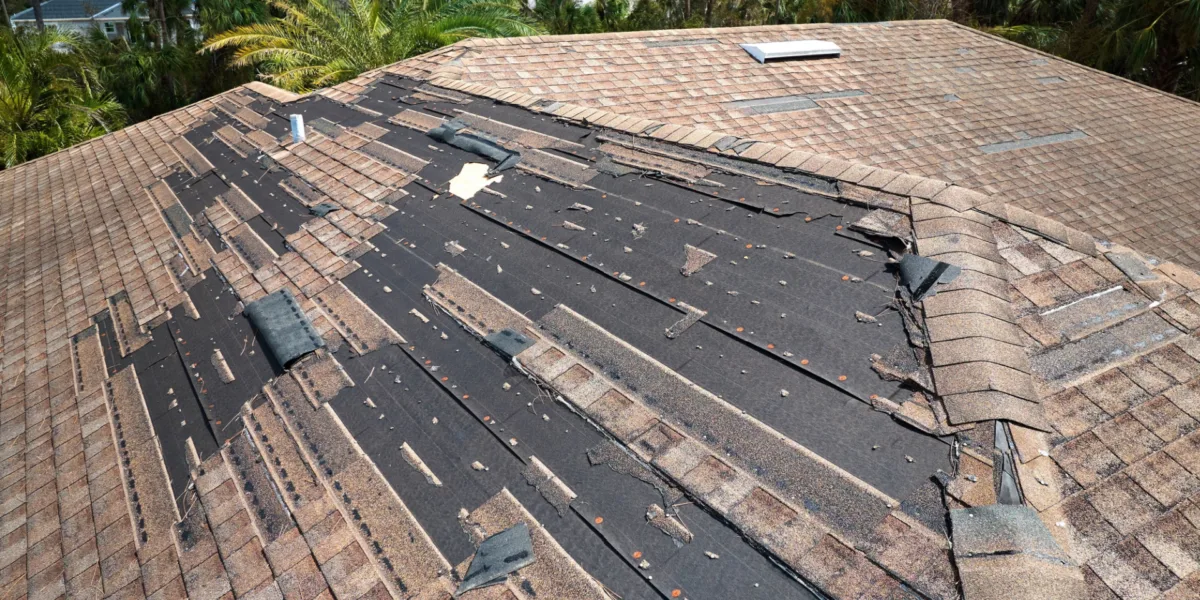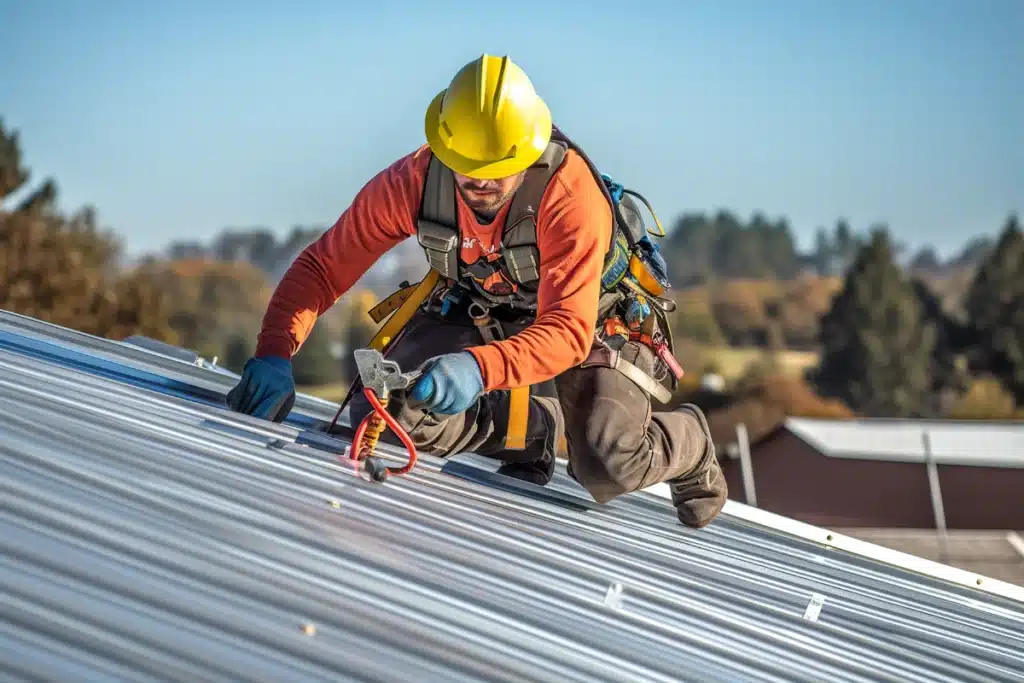Seasonal Roofing System Fixing List: Prepare Your Roofing System for each Climate
To prepare your roof covering for every single weather condition season, begin with a detailed examination before wintertime. Inspect for missing out on roof shingles and put on around smokeshafts. As springtime shows up, make specific all gutters are clean and look for loosened floor tiles. Summer maintenance must concentrate on air flow and granule loss on tiles. Come fall, clear seamless gutters again and visually evaluate for any kind of indicators of wear. Knowing about usual roof concerns and when to call a professional can assist prolong your roofing system's lifespan.
Evaluating Your Roof Covering Prior To Winter Season
As winter strategies, it's crucial to check your roof covering thoroughly to stop costly damage. Beginning by examining for missing or damaged shingles; also a little issue can result in bigger troubles when snow and ice gather. Look for indications of wear around chimneys, vents, and flashing, as these areas are often vulnerable to leaks.
Next, take a look at the downspouts and gutters. Verify they're free from particles, as clogged seamless gutters can trigger water to back up and damage your roof. Take notice of any drooping areas, which can indicate architectural issues requiring immediate interest.
Don't forget to evaluate your attic for signs of water damage or mold and mildew, which can indicate a roofing leak. Ultimately, if you identify any major worries, it's a good idea to consult a professional for repair work. Taking these actions will assist ensure your roofing holds up against the extreme cold weather ahead.
Preparing Your Roofing for Spring Showers
Before the springtime showers get here, it's vital to prepare your roofing system to manage the enhanced dampness and potential storms. Begin by examining your roofing for any kind of loose shingles or tiles. Make sure they're firmly fastened to avoid leaks throughout hefty rain. Next off, clear out downspouts and gutters to assure correct water drainage; stopped up rain gutters can result in water pooling and roof damage.
Check for any type of signs of damages, like splits in the blinking or locations where water might gather. It's best to address it now instead than wait for the initial downpour. if you see anything worrying.
Likewise, take into consideration cutting overhanging tree branches to lower the danger of them dropping on your roofing system throughout storms. Ultimately, if your roof covering is older, consider setting up a specialist assessment. Taking these actions now will assist you prevent pricey repairs later on and maintain your home dry and risk-free this springtime.
Summer Maintenance Tips for Your Roof Covering
As summer season strategies, it's a good time to provide your roof some added attention. You ought to evaluate for roof shingles damages, clean your rain gutters completely, and examine your air flow systems to ensure whatever's in leading form. Taking these actions now can conserve you headaches in the future.
Examine for Tile Damages
While summertime brings longer days and warmer climate, it's likewise the best time to examine your roofing system for shingle damages. Remember, a well-kept roof not just protects your home yet also improves its aesthetic allure. By taking these steps currently, you'll ensure your roof remains reliable and solid throughout the summer season and beyond.
Clean Rain Gutters Extensively
Cleaning your gutters extensively is essential for preserving your roof covering's health during the summertime months. Clogged up gutters can result in water backup, triggering possible damages to your roofing system and home. Start by removing leaves, twigs, and particles from the rain gutters using a scoop or your hands while wearing handwear covers. As soon as cleared, purge the seamless gutters with water to assure proper water drainage. Check downspouts for clogs, and make sure water moves freely far from your structure. Take into consideration using a garden pipe with a spray nozzle to dislodge persistent clogs if needed. Regularly cleaning your rain gutters not only prevents roof damages but also safeguards your home from mold and mold. Remain aggressive to keep your roofing system in leading form this summertime!
Examine Air Flow Systems
To ensure your roof covering remains in peak condition during the summer season, inspecting your air flow systems is necessary. Begin by checking your roof covering's vents, ensuring they're not blocked by particles or insulation. If your roof covering has soffit vents, make sure they're unblocked to enable fresh air circulation.
Loss Inspection: Obtaining Ready for Winter Season
As fall approaches, it's essential to examine your roof for any loose tiles that can be susceptible to winter weather condition. Do not neglect to remove seamless gutters and particles to ensure appropriate water drainage and stop ice dams. Taking these actions now can conserve you from bigger headaches in the future.
Inspect for Loose Tiles
Prior to winter months embed in, it's vital to inspect your roofing for loose tiles, since these can lead to serious problems when snow and ice gather. Beginning by visually examining your roof covering from the ground. Look for any type of tiles that show up misplaced, split, or missing out on. Check for any kind of indicators of wear or damages up close if you can safely get onto your roofing. Carefully lift each tile to see if it's protected properly. If you find loose ones, reattach them or replace them as needed. Pay unique focus to the roofing system sides and valleys, where wind can dislodge shingles a lot more easily. When winter months weather hits., taking these steps currently can save you from pricey fixings later on.
Clear Gutters and Debris
Cleaning seamless gutters and removing debris is a vital action in preparing your roofing for winter. Blocked seamless gutters can bring about water back-up, creating ice dams that harm your roofing and home. Start by using a durable ladder to access your rain gutters safely. Get rid of leaves, twigs, and any type of other debris that's gathered. Don't neglect to inspect downspouts, ensuring they're clear and directing water far from your foundation. Think about adjusting the slope of your gutters if you discover any type of locations where water often tends to swimming pool. Once every little thing's tidy, flush the gutters with water to check for proper drain. Taking these actions now will certainly aid avoid costly repairs down the line and maintain your roofing in excellent form throughout the winter.
Cleansing and Clearing Up Seamless Gutters and Downspouts
While you could not think regarding gutters and downspouts routinely, keeping them clean is important for keeping your roof covering's health and wellness. Blocked gutters can lead to water build-up, which can harm your roofing system and structure.
When you see the accumulation, scoop it out utilizing your hands or a little trowel. A garden tube can help purge it out if you encounter persistent cruds. Don't forget to inspect the downspouts; make certain they're clear so water can move easily.
If you observe any type of blockages, use a plumbing snake or a high-pressure nozzle to clear them. Routine cleaning, ideally twice a year, maintains your rain gutters operating effectively and avoids pricey fixings down the line. Your roof will thanks for the initiative!
Determining Common Roof Covering Problems by Season
As the seasons change, it's essential to stay vigilant go check concerning your roofing system's problem, given that each season brings its very own collection of obstacles. In winter, expect ice dams that can create water to support under shingles, leading to leaks. Spring commonly brings heavy rains, so inspect for missing out on shingles and look for water merging.
Summertime's warm can lead to split shingles or blistering, so watch out for signs of wear. Fall's dropping fallen leaves can obstruct rain gutters and trap moisture, boosting the threat of mold and mildew and degeneration.
 roof repair
roof repair
When to Call a Specialist Roofing Contractor
Knowing when to call a professional roofing contractor can conserve you money and time. If you observe missing shingles, water spots on your ceiling, or leakages during a rainstorm, it's time to get to out for help. Do not underestimate the threats of climbing on your roof covering yourself, specifically if you do not have experience. Security must constantly precede.
If your roofing is over two decades old or shows significant deterioration, seeking advice from an expert is wise. They can assess whether repairs or a full substitute is necessary. Additionally, after serious climate occasions like tornados or hail storm, obtain a professional to inspect for surprise damage.
When your DIY efforts develop into disappointment or if you're unsure concerning a repair work, calling a roofing professional can prevent more damage. Keep in mind, purchasing expert assistance can expand your roof covering's life expectancy and assure your home keeps safeguarded.
Often Asked Concerns
Exactly how Typically Should I Examine My Roof Covering Throughout the Year?
You need to check your roof at the very least twice a year, preferably in springtime and fall. Regular checks assist you capture potential problems early, ensuring your roofing system stays in excellent form and secures your home properly.
What Tools Do I Required for Roof Covering Inspections?
For roof examinations, you'll need a sturdy ladder, safety belt, flashlight, and field glasses. A wetness meter and a tape step can also aid you evaluate any type of damages efficiently. Don't forget gloves for security!
Can I Fix My Roof covering Myself or Should I Hire a Specialist?
If you're certain and have the right tools,You can repair your roof on your own. Nonetheless, if you're uncertain or the damage is comprehensive, employing a specialist assurances safety and quality results. Do not be reluctant to request help!
Exactly how Do I Know if My Roof Covering Requirements Replacing?
You'll know your roofing system requires changing if you see significant leaks, crinkling roof shingles, or granule loss. If it mores than two decades old or visibly sagging, it's time to contemplate a substitute prior to further damages occurs.
What Are the Signs of Roof Covering Damage After a Tornado?
 roof repair
roof repair
Seasonal Roof Repair List: Prepare Your Roofing System for Every Weather Condition
Learning concerning common roof covering concerns and when to call a specialist can aid prolong your roof covering's life expectancy.
Verify they're clear of debris, as clogged rain gutters can create water to back up and harm your roofing system. Next off, clean out downspouts and seamless gutters to guarantee proper water drainage; clogged up seamless gutters can lead to water merging and roofing damage.
Blocked rain gutters can lead to water back-up, triggering prospective damage to your roof covering and home.